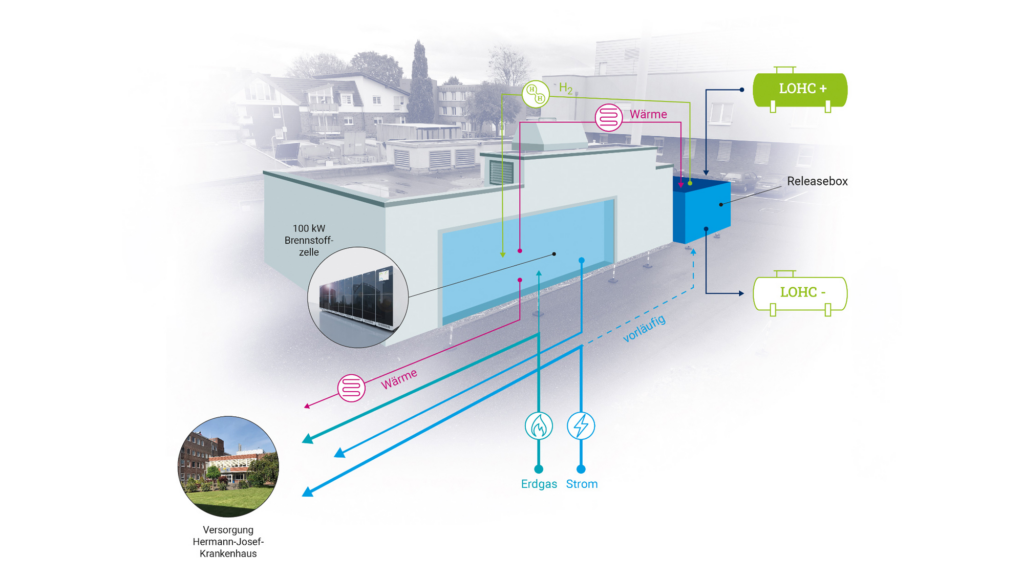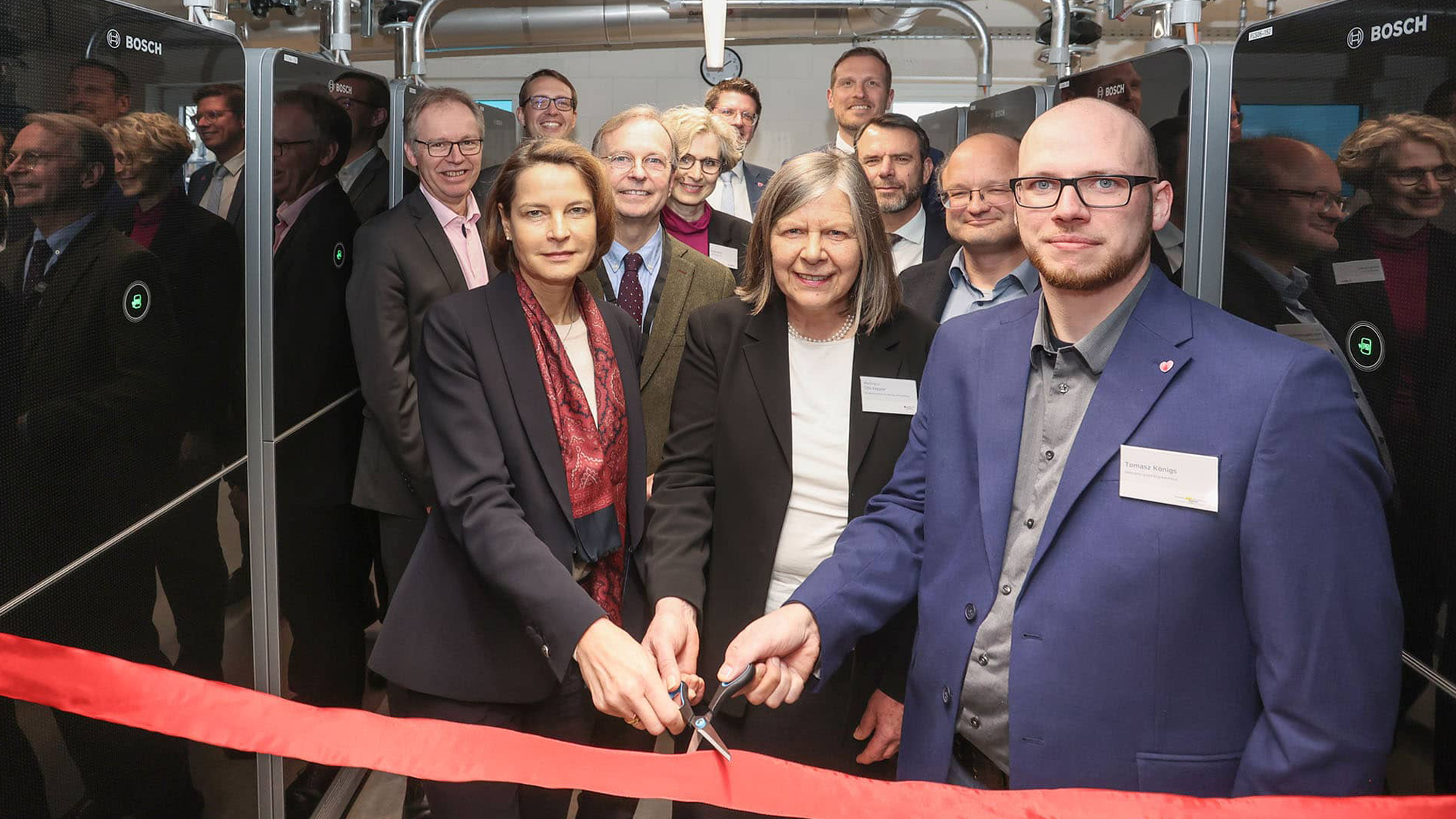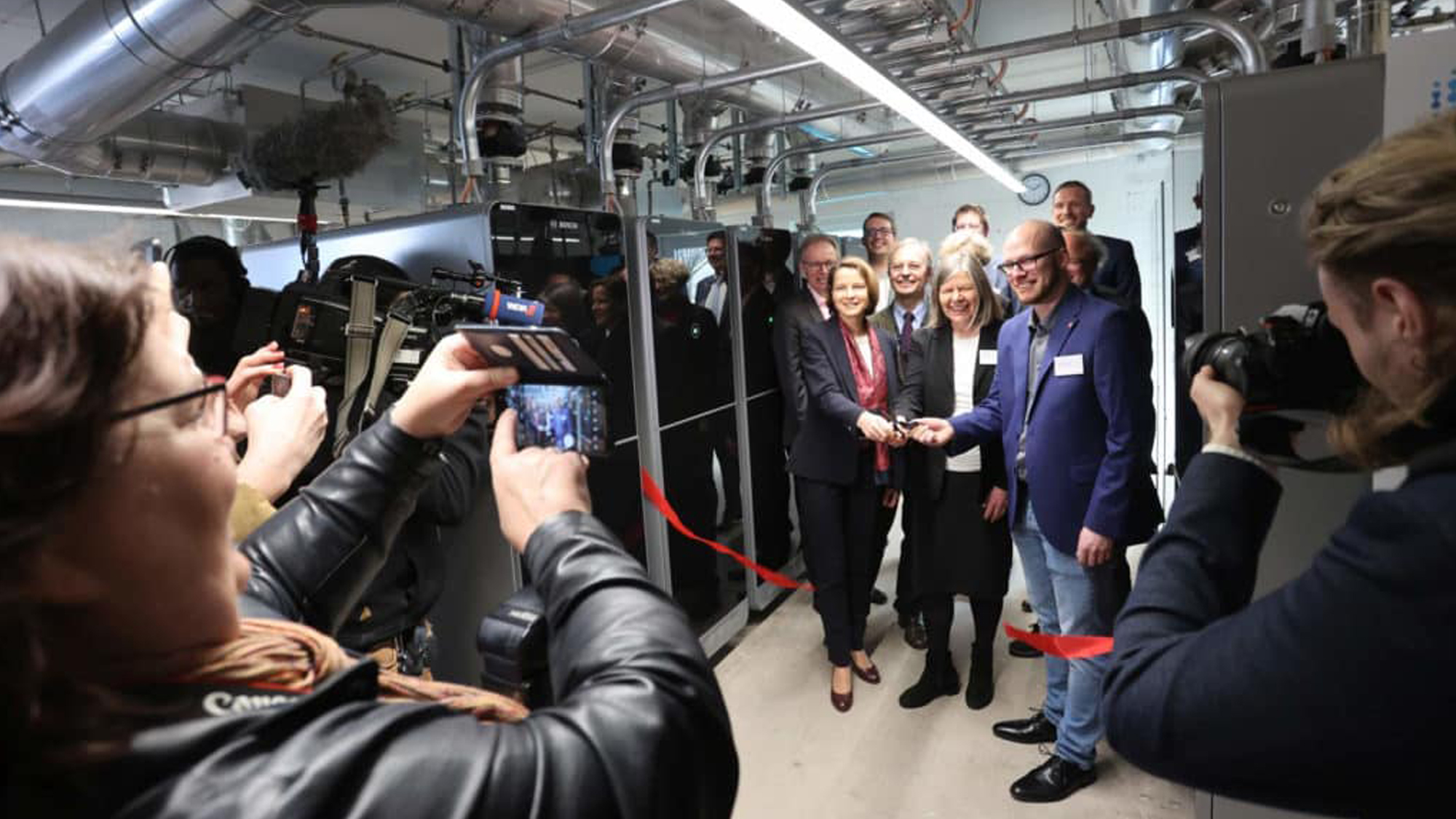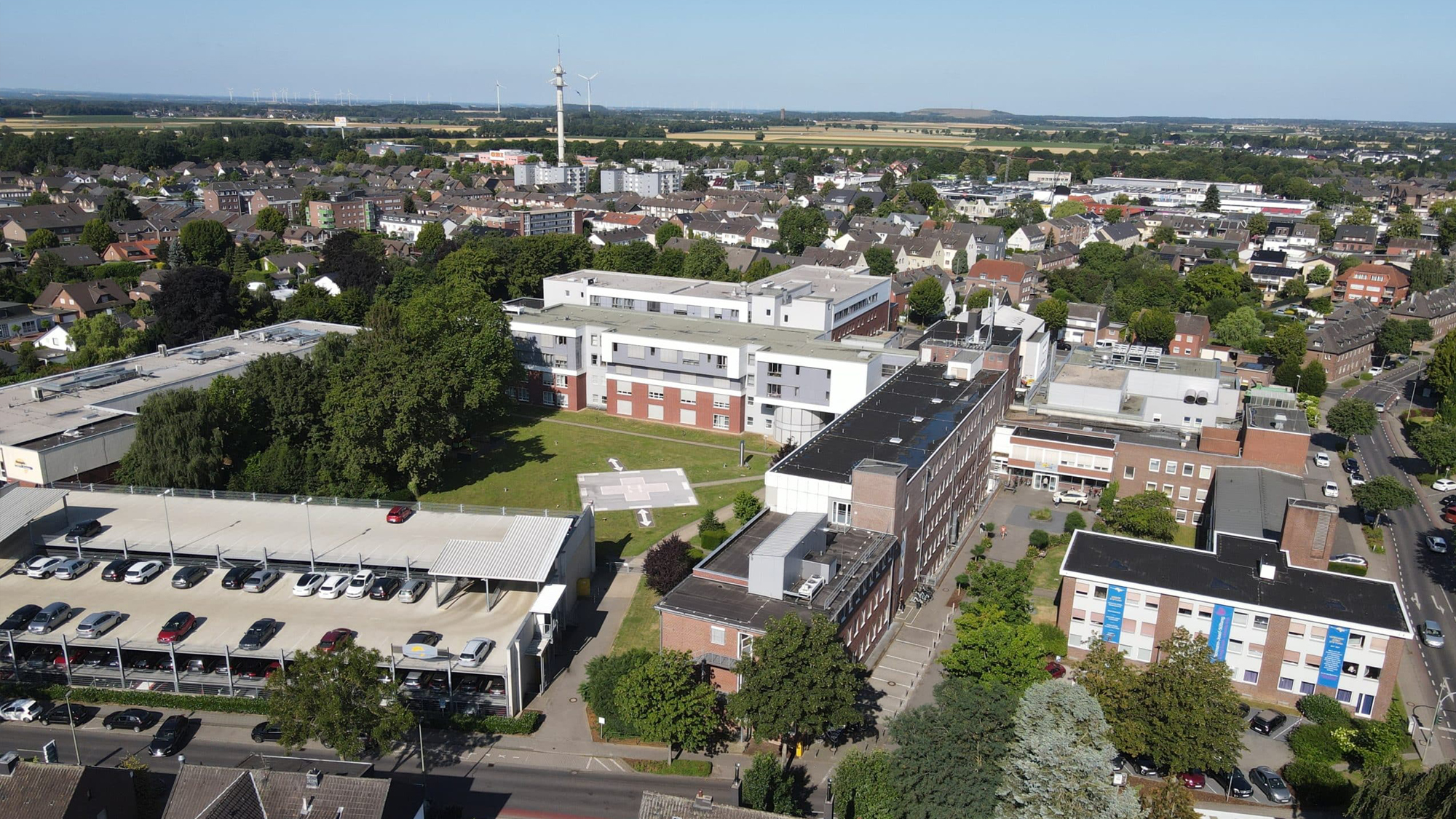Jülich/Erkelenz. The Hermann-Josef-Krankenhaus (HJK) hospital in Erkelenz is becoming a pioneering project for the environmentally friendly energy supply of the future. At the hospital, Robert Bosch GmbH and Hydrogenious LOHC NRW GmbH are demonstrating the coupling of new hydrogen technologies on an economically relevant scale for the first time. The project is contributing to the energy transition and is one of the major projects in the Rhenish mining area whose research findings will contribute to the success of structural change. The Helmholtz hydrogen cluster (HC-H2), which was initiated and is sustainably supported by Forschungszentrum Jülich, coordinates the demonstration project.
The aims of the project, called Multi-SOFC, are to significantly reduce CO2 emissions and provide a more efficient energy supply for the HJK. The partners want to demonstrate the innovative combination of two new hydrogen technologies by the end of 2026. The aim is to evaluate a solution that is more climate-friendly and cheaper in the long term. The aim is to test whether half of the hospital’s base load can be covered by the multi-SOFC project. The demonstration project is intended to be a globally visible model for the future energy supply of large buildings. The Federal Ministry of Education and Research is funding the multi-SOFC project with 23.6 million euros.
The focus is on the solid oxide fuel cell system (SOFC: Solid Oxide Fuel Cells) from Robert Bosch GmbH for the supply of electricity and heat. In a later expansion stage from the beginning of 2025, the SOFC will be supplied with hydrogen based on Liquid Organic Hydrogen Carrier (LOHC) technology by Hydrogenious LOHC NRW GmbH, a subsidiary of Hydrogenious LOHC Technologies in Erlangen.
You can find out more about the LOHC technology in the supplementary information below.
In the energy centre at Erkelenz hospital, a 100 kW SOFC system,
consisting of ten fuel cell units, will complement the existing combined heat and power unit. It is the first pre-series system of this size to be installed by Bosch for regular operation. The system will be put into operation in the middle of the year. The hospital’s entire power supply is guaranteed without the new installations.
In the first project phase, the SOFC system will be powered by natural gas. This alone offers advantages compared to the hospital’s existing natural gas engine: the SOFC system has an electrical efficiency of 60 %; the gas engine around 36 %. The SOFC system thus emits almost 40 % less CO2 when generating electricity from pure natural gas compared to the gas engine. During continuous operation at the hospital, this would lead to CO2 savings of 150 tonnes per year in the first stage of the project.
The heat generated when the natural gas is converted into electricity in the SOFC system will initially be used to heat the hospital. With this combination of electricity and heat, an SOFC system will achieve an overall efficiency of around 85 % at the beginning of its life cycle, making it highly efficient. Over the course of the project, the partners plan to gradually increase the proportion of hydrogen in the gas mixture for the SOFC system, thus helping to further reduce CO2 emissions.
From 2025, the SOFC will be supplied with hydrogen that is chemically bonded to a liquid organic hydrogen carrier (LOHC). A dehydrogenation system will be installed on site by Hydrogenious. The hydrogen stored in the LOHC will then be released in this system before being fed into the fuel cell. Heat from the SOFC system will be used to power up this LOHC system and will in future also supply the energy that is required to release the hydrogen from the LOHC. Until then, the system will be electrically heated.
The project in Erkelenz is the first of several demonstrators being coordinated by HC-H2 in the Rhenish mining area. The Helmholtz cluster consists of Forschungszentrum Jülich’s Institute for a Sustainable Hydrogen Economy (INW), which was founded in 2021, and its project partners from industry, business, local authorities, and research. HC-H2 aims to demonstrate innovative, environmentally friendly hydrogen technologies in the Rhenish mining area that can be used worldwide. Its second important objective is to create new jobs and economic power in the region to compensate for the phasing out of lignite by 2030.

Supplementary information The advantages of Hydrogenious’ LOHC technology
The LOHC technology installed by Hydrogenious LOHC NRW in Erkelenz is an innovative solution for the particularly safe and efficient storage and transport of hydrogen. Hydrogenious’ special LOHC technology binds hydrogen to benzyl toluene, a thermal oil that can be handled easily and safely at ambient pressure and temperature. Even when loaded with hydrogen, this LOHC is flame-resistant and non-explosive, making it ideal for use at the hospital. In addition, there is no boil-off, meaning that no hydrogen is lost from the LOHC. Alternative methods, such as compression at high pressure or the liquefaction of hydrogen when cooled to a temperature of -253 °C, are energy-intensive in comparison and require greater effort to prevent the loss of hydrogen and ensure the safety of the systems.
What the project partners say
“At least 92 kW of electricity and 220 kW of heat are constantly consumed in operating the hospital. Our round-the-clock operation means that we have a constant consumption requirement that was important for the project. It is important for us to play a role in developing hydrogen technologies and we are delighted to be part of this innovative project.”
Jann Habbinga, administrative director at the HJK hospital in Erkelenz
“Decentralized power supply is becoming increasingly important. Our solid oxide fuel cell system produces electricity in an environmentally friendly and demand-oriented way. This creates security of supply for critical infrastructure such as hospitals and allows us to make an important contribution to climate change mitigation. The project in Erkelenz is a fantastic opportunity to test our SOFC system in the infrastructure of a hospital and to subsequently demonstrate the benefits of the interaction with an LOHC system.”
Dr. Wilfried Kölscheid, Senior Vice President at Bosch, who is responsible for the stationary solid oxide fuel cell programme
“Multi-SOFC is our first demonstration project. We are proud to have come this far just 15 months after our foundation. We are not only expanding at our headquarters in Brainergy Park in Jülich, but also through our demonstration projects in the Rhenish mining area. This project is an important milestone because with our partners, we are demonstrating a technology on a large scale for the first time in the region, which could become a global solution for an environmentally friendly energy supply of large building complexes.”
Prof. Peter Wasserscheid, Founding Director of the Institute for a Sustainable Hydrogen Economy (INW)
“As a pioneer in the field of liquid organic hydrogen carriers, it is crucial for us to demonstrate the potential synergy effects in practice. The project in Erkelenz impressively proves the huge potential of combining innovative hydrogen technologies. At the same time, it is also a fantastic opportunity for us to demonstrate an environmentally friendly energy supply in NRW. Our willingness to make a sustainable commitment to the region is demonstrated not least by the foundation of our subsidiary, Hydrogenious LOHC NRW GmbH.”
Dr. Caspar Paetz, Chief Technology Officer at Hydrogenious LOHC Technologies
The copyright for the images used on this website is held by Forschungszentrum Jülich, aligator kommunikation GmbH and
stock.adobe.com.




